2021 Polestar 2 Review: Stuck in the Middle With 2

FAST FACTS
| Motor: | 2 x electric motors w/ 78-kWh battery |
| Output: | 408 hp, 487 lb-ft |
| Transmission: | 1AT, AWD |
| US fuel economy (MPGe): | 96/88/92 |
| CAN fuel economy (L/100KM): | 2.5/2.7/2.6 |
| Starting Price (USD): | $61,200 (inc. dest.) |
| As-Tested Price (USD): | $67,400 (inc. dest.) |
| Starting Price (CAD): | $71,800 (inc. dest.) |
| As-Tested Price (CAD): | $79,000 (inc. dest.) |
If you’re a new manufacturer wading into the EV market, do you build a car or a crossover? Polestar’s answer is “yes.”
The brand previously known as the in-house go-faster outfit for Volvos has ventured out on its own. As an electrified brand, Polestar started out with the ulra-rare Polestar 1, a pretty (and pretty complicated) coupe. For its next act, Polestar is targeting a much wider part of the market—and going pure EV to boot. The 2021 Polestar 2 splits the difference between cars and crossovers, with a unique form factor that drew plenty of looks during our week together. More than that, however, it offers a smooth-riding package with a novel user interface that could prove a harbinger for the industry.
What’s new?
Somewhat unsurprisingly, there’s a lot of Volvo to the look of the Polestar 2. Surface detailing is kept to a minimum here, resulting in a clean, sharp suit for Polestar’s more proletariat offering. It’s a taller package than the typical sedan, giving off the same vibe as the short-lived S60 Cross Country or the Subaru Outback sedan. But a sedan this is not. Pop the trunk and you’ll find the 2 is actually a liftback, with a shared space for the rear seats and storage. More practicality is always welcome.
Get a Quote on a New Polestar 2To these jaded eyes, the Volvo family looks are undeniable. That wasn’t the case for the people who regularly asked me about the Polestar everywhere we went. It started not five minutes after picking it up: a friendly couple honked from beside me at a red light, wanting to know “what the heck it is, ’cause it’s not a Tesla.” People would wait outside stores to ask about it. A policeman asked to take a picture with it. There’s something subtly futuristic about the 2, its refusal to fit into a single tidy category. Polestar’s designers have even made four-spoke wheels look good, too.
Unlike its high-end sibling, the Polestar 2 uses Volvo’s CMA platform. It’s the same one found underneath the Volvo XC40, which also uses this BEV setup in XC40 Recharge guise. It uses a 78-kWh battery pack, and the upcoming entry-level front-drive model will as well.
Minimalist interior, super-functional Android
The cool Scandinavian vibe continues inside. As so many EVs do these days, the Polestar 2 eschews nearly all physical controls for a single, central touchscreen. The materials are all vegan-friendly, including the supportive front-row seats trimmed in WeaveTech, Polestar’s cloth made of recyclable material. Leather is an option, mind you. It’s a very friendly, airy space, with the WeaveTech and low-gloss wood trim mingling together like a high-end living room sofa. That stretched outer shape and the standard glass roof means there’s enough headroom front and back for six-footers, too. Taller passengers will find their noggin rubbing the roofliner, however.
While everything looks and feels good from the driver’s seat, there’s an ugly seam where the plastic wraps around the top of the V-shaped center console. I wouldn’t say no to physical climate control buttons, either. Or one to start the car, for that matter; like the XC40 Recharge and Teslas, it simply turns on or off when you get in or out. On the flip side, the carved-out shifter might look a little gimmicky, but it feels good to use. My favorite feature has to be the side-view mirrors, with an ultra-thin bezel giving them the look of high-end TVs.
The bigger news is the Android Automotive infotainment screen; the first of its kind, Polestar says. It functions just like a modern mobile device, with a delightfully faux-retro orange-and-black color scheme. Android users can of course pair their own device; CarPlay was still not available when I tested the 2, but it should arrive soon.
SEE ALSO: 2021 Volvo XC40 Recharge Review: First DriveMuch of the infotainment experience is good. Voice recognition works very well: every “Hey Google” saw an accurate response, including tough Toronto address requests. Being able to easily access navigation info right in the digital instrument panel is a big deal, too. The touchscreen itself is much speedier to load up and respond than previous Volvo systems as well. There were small issues with certain apps not always loading, and the driver performance app did not provide a breakdown of my trips in as much detail as I would have liked. It can only show battery efficiency within 2 kWh/100 km, for example.
How does it drive?
At launch, the Polestar 2 comes only in its highest-performing version: the twin-motor AWD setup. The two electric motors pull from a 78-kWh battery pack, together producing a stout 408 horsepower and 487 lb-ft of instant-access torque. The standard run up to 62 mph (100 km/h) happens in the mid-4-second range. In that oh-so-addictive EV way, the shove is immediate, sustaining well into cruising speed. The throttle pedal is sensitive, enough that barely a tickle will move the 2 off from a stop, but it gives the whole car an eager, ready-to-go feel.
SEE ALSO: 2021 Volkswagen ID.4 Review: First DriveThe brake pedal is firm, with strong responses right from the start. There are three levels of regenerative braking available, too. The most aggressive setting takes some getting used to, and will easily bring the car to a stop if it has the space. By the end of the week I was used to it, addicted to the challenge of figuring out the best spots to lift off between city blocks.
As fun as the EV point-and-shoot straight-line performance is, it’s the Polestar 2’s attitude around corners that really hooked me. The optional Performance pack swaps in those 20-inch alloy wheels, wrapped in sticky, 245/40 Continental SportCompact 6 tires. Larger four-piston Brembo brakes sit behind the spokes, painted in the same gold as the valve stem caps and seat belts. There’s also an Öhlins manually-adjustable suspension, which arguably is a little extreme for what is ostensibly a luxury car.
With the suspension at its default setting, the 2 strikes a fine balance between everyday comfort and sporting intentions. It smothers road imperfections while remaining composed. The interior is generally very quiet over rough terrain, though a high-frequency buzz coming from somewhere just behind the rear seats was regular on medium-to-large bumps. Encounter a corner, and the 2 corners flat with a neutral balance. Sport mode nixes the stability control, but still the 2 remains calm and collected. All that weight low down in the chassis helps.
SEE ALSO: Ford Mustang Mach-E vs Tesla Model Y ComparisonThe 2’s range varies quite a lot based on driving style. I had the car during the Automobile Journalists Association of Canada’s EcoMonth, where one challenge involved driving to and from a 150-kW charger: one way as I’d normally drive, the other with an eye on efficiency. Following the traffic flow and running the climate control netted a 22.2 kWh/100 km rating, suggesting a single-charge range of just 351 km (218 miles). My way home registered 16.2 kWh/100 km, for a hypothetical 481 km (299 miles). The 2 will accept an 150-kW fast-charge, and is equipped with an 11-kW charger for home use, which can fully replenish the battery in eight hours.
Who’s the competition?
Potential Polestar 2 buyers will be cross-shopping the Scandinavian hatchback against models as diverse as the Tesla Model Y, the Ford Mustang Mach-E, and Volkswagen ID.4. All three more closely align with the traditional crossover shape, which gives them the benefit of more behind-the-seats storage space. Playing the numbers game, the Polestar can’t match the others’ single-charge range, bringing up the rear at 233 miles (375 km). This year’s entry-level front-drive model will boost that figure to a more competitive 260 miles (418 km).
The entry-level model will also address the Polestar’s other weakness: price. Currently the 2 starts at $61,200 ($71,800 CAD) including destination, putting it comfortably clear of any ID.4, and knocking on the doors of the 450-horsepower Model Y Performance and 480-horsepower Mach-E GT. First Editions like this tester include both the Pilot and Plus options package, further inflating prices. The white paint and Performance package bump the as-tested price to $67,400 ($79,000 CAD). That’s a lot of coin, especially for something that may not have the name recognition (Tesla) or disruptor status (Mach-E). The Polestar does a convincing job of feeling more premium than either, however—and it still qualifies for the $7,500 federal tax credit in the US.
SEE ALSO: 2021 Ford Mustang Mach-E Review: EV Power to the PeopleVerdict: 2021 Polestar 2 Review
The 2021 Polestar is a deceptively appealing car. It can come off as too demure on first blush, with little to set it apart beyond its unusual proportions and unfamiliar badge. Spend a bit of time with it, however, and it slowly reveals its character. A designer interior is easy to love, as is the strong, accessible performance and engaging handling. The Android infotainment can take some getting used to—and CarPlay connectivity should’ve been a thing at launch—but it’s an elegantly simple solution for an increasingly convoluted problem.
The biggest blemishes on the 2’s record are its relatively short range and high price against similar EVs. It feels more premium than any of them though, going some way to explaining that cost disparity. What’s more, its unique shape helps it stand out in the crowd. Sometimes the middle’s a good place to be after all.
Become an AutoGuide insider. Get the latest from the automotive world first by subscribing to our newsletter here.
LOVE IT
- Ultra-hip looks
- Surprisingly fun to drive
- Android Automotive is very smooth ...
LEAVE IT
- ... and sometimes a little too minimal
- Range and charging speed already behind the curve
- Some cheapish interior bits

Kyle began his automotive obsession before he even started school, courtesy of a remote control Porsche and various LEGO sets. He later studied advertising and graphic design at Humber College, which led him to writing about cars (both real and digital). He is now a proud member of the Automobile Journalists Association of Canada (AJAC), where he was the Journalist of the Year runner-up for 2021.
More by Kyle Patrick



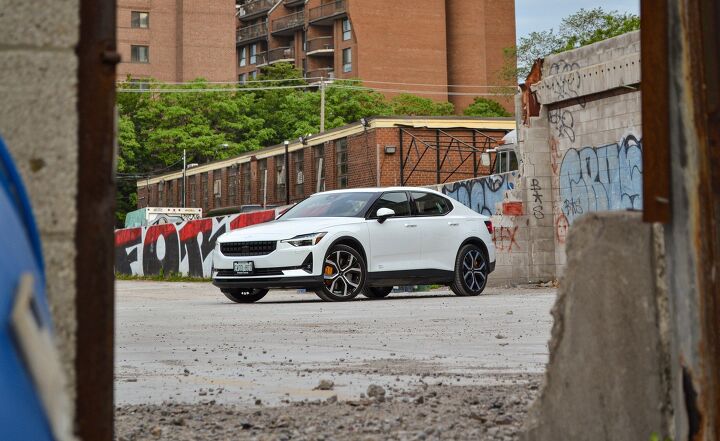




















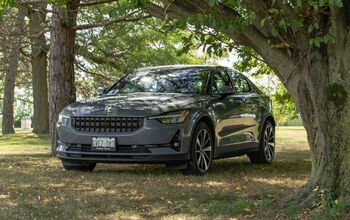

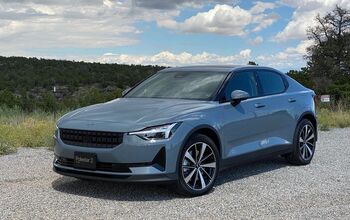
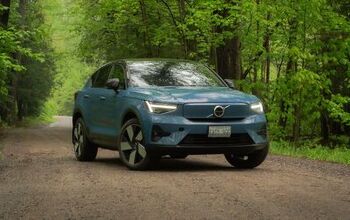
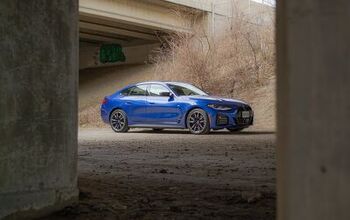
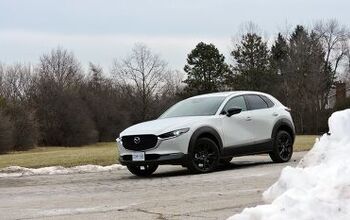
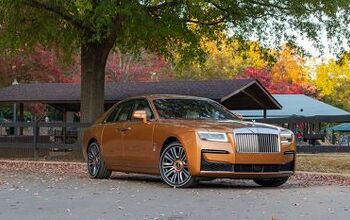
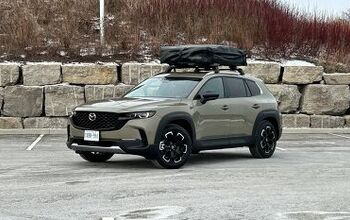

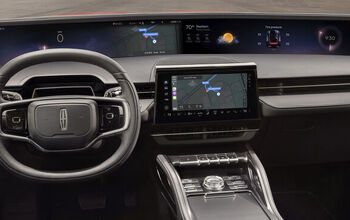





Comments
Join the conversation